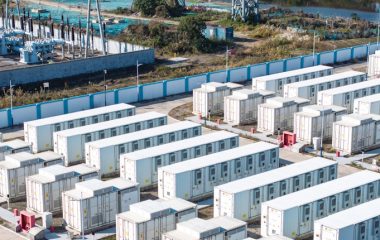
Photo: Pixabay
State energy regulator California Energy Commission (CEC) has proposed the installation of solar panels and battery storage be mandatory for the construction and renovation of commercial, public, and residential buildings.
Mandatory installation of solar panels for new and renovated buildings is an expansion of California’s decision to introduce the obligation for new residential buildings from 2020.
The California Energy Commission (CEC) said it adopted the 2022 Building Energy Efficiency Standards (Energy Code) for newly constructed and renovated buildings to produce benefits to support public health, climate and clean energy goals.
The 2022 Energy Code extends solar and introduces battery storage standards to highrise multifamily buildings (apartments and condos), hotels, motels, tenant space, office and medical office buildings, clinics and retail and grocery stores, restaurants, schools, theaters, auditoriums, and convention centers.
Homes and businesses use nearly 70% of California’s electricity and are responsible for a 25% of GHG emissions
Last year CEC introduced the same obligation for new residential buildings with three stories or less. When presented in 2018, the measure was the first on a state level in the United States, and most of the world. In May, German capital Berlin adopted a similar decision. Vienna introduced such a building code last year.
According to the regulatory agency, over the next 30 years, new rules will provide an estimated USD 1.5 billion in consumer benefits and reduce 10 million metric tons of greenhouse gases, equivalent to taking nearly 2.2 million cars off the road for a year.
Homes and businesses use nearly 70 percent of California’s electricity and are responsible for a quarter of the state’s greenhouse gas (GHG) emissions.
Over the next 30 years, new rules are projected to provide USD 1.5 billion in consumer benefits and reduce 10 million metric tons of GHGs
In addition to new buildings, the standards apply to substantial upgrades to existing homes and businesses. At least 50 percent of single-family homes and nearly 60 percent of California’s apartment complexes (about 14 million total residences) were built before the state’s first energy standards. Updating older buildings is critical to achieving the state’s climate and clean energy goals, the commission said.
CEC is the state’s primary energy policy and planning agency with a mission to lead the state to a 100 percent clean energy future. It adopts standards every three years to cost-effectively increase the energy efficiency and lower the carbon footprint of buildings.
The 2022 update will be submitted to the California Building Standards Commission (CBSC), which is scheduled to consider it in December 2021. If approved, it would go into effect on January 1, 2023, giving builders, contractors and other interested parties a year to gear up for the changes.


















Be the first one to comment on this article.